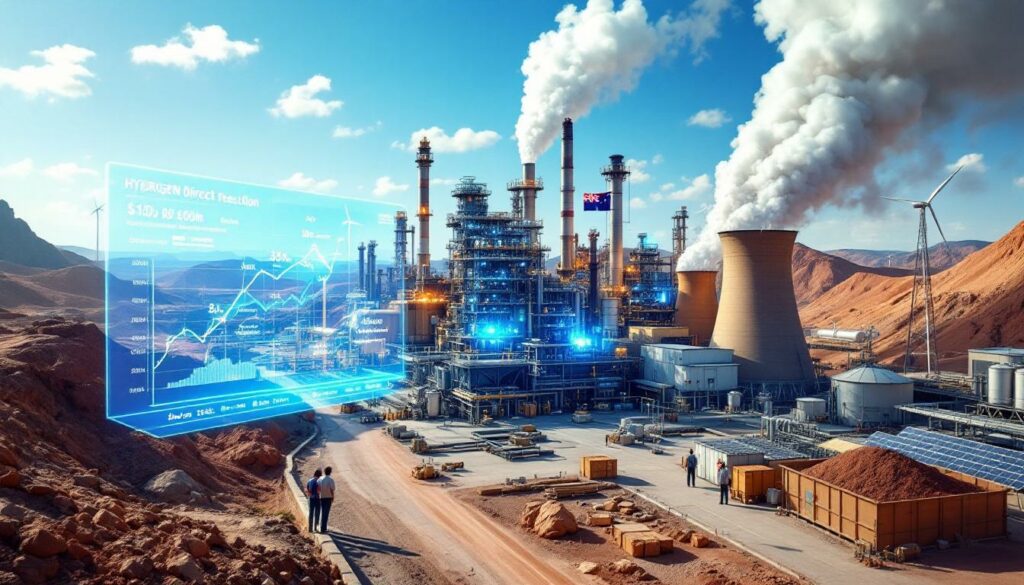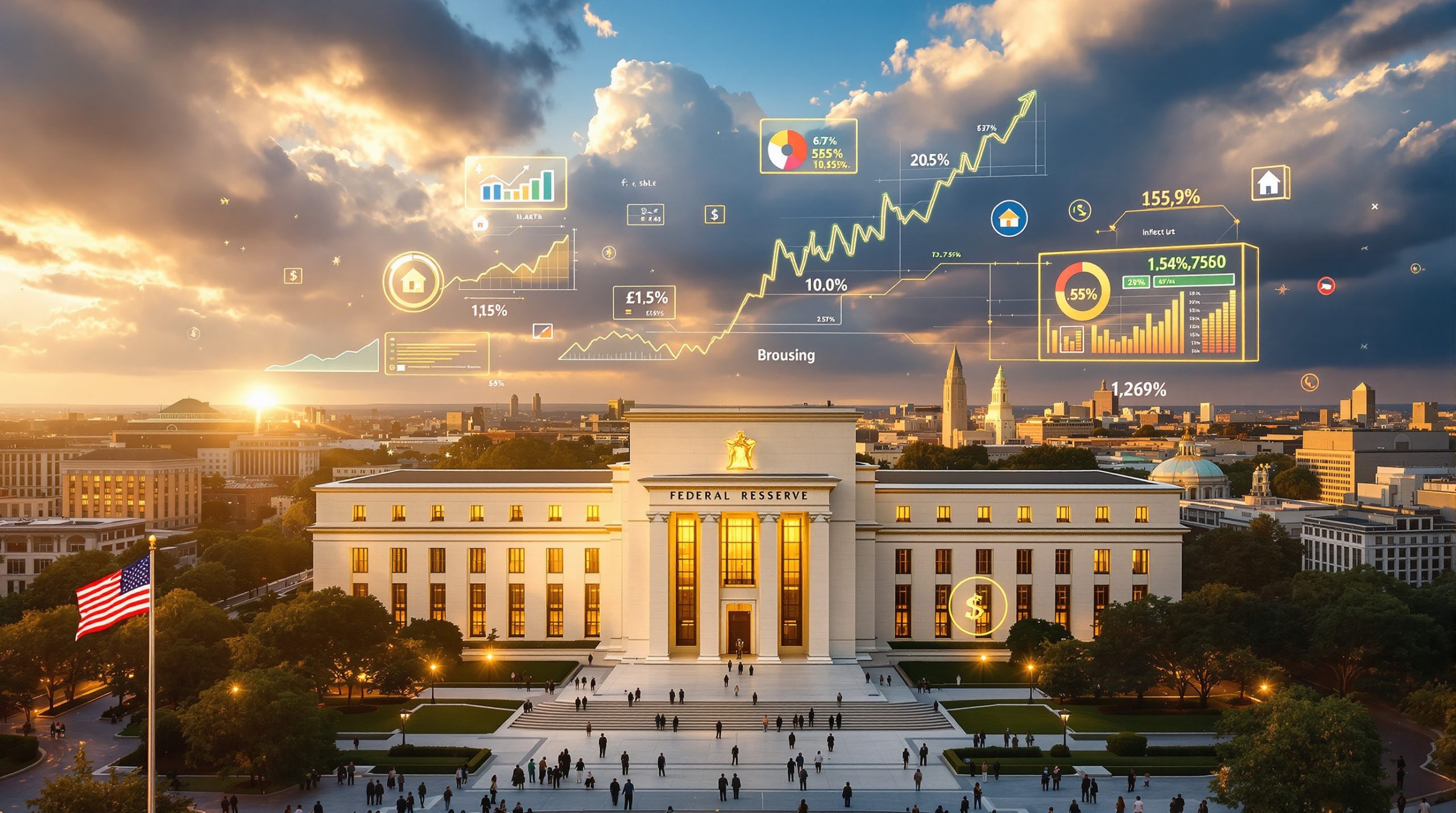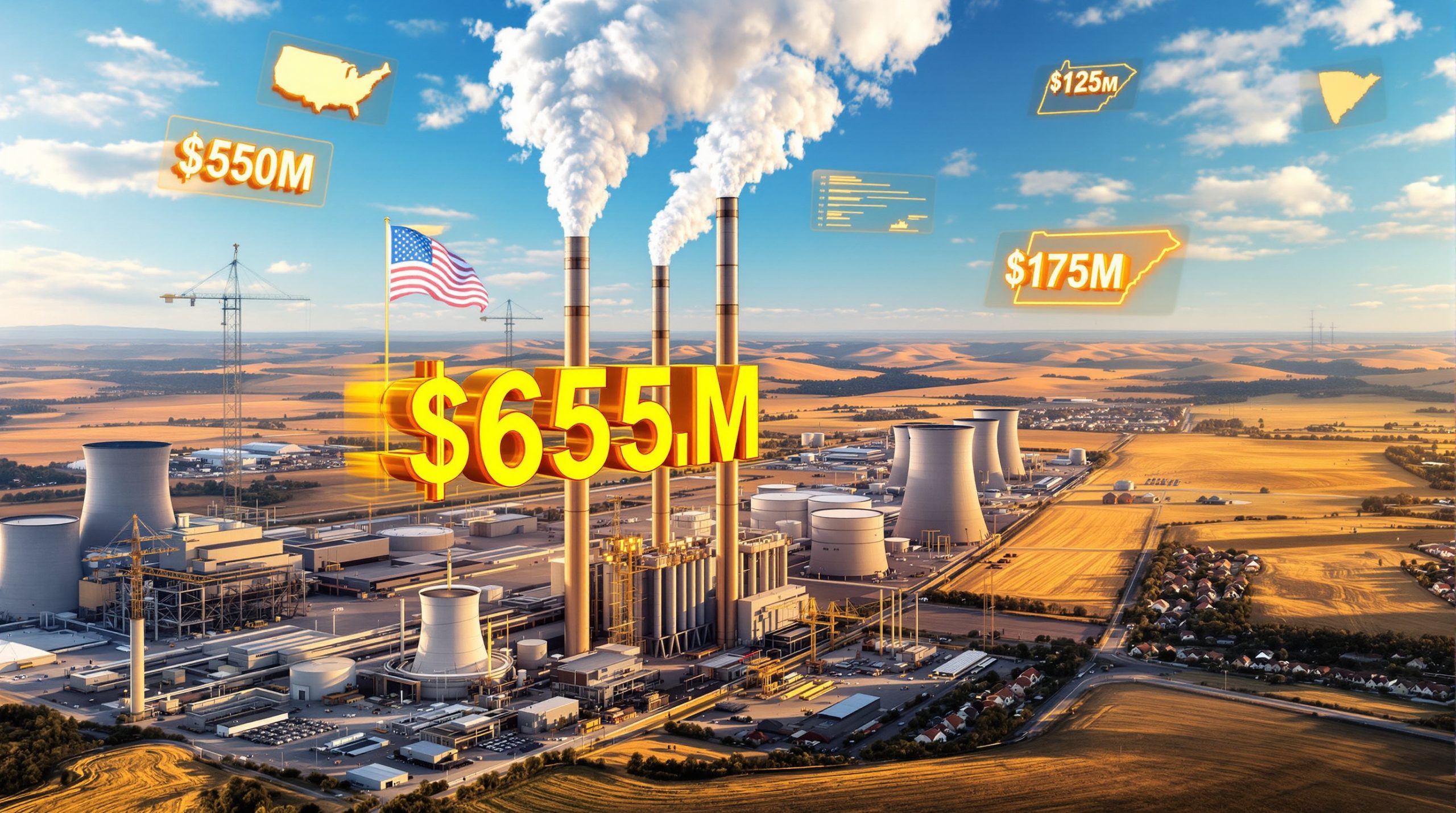Why Australia Faces Economic Barriers to Green Steel Production
Australia stands at a crucial crossroads in developing its green steel industry, despite its position as one of the world's largest iron ore exporters. While the country possesses abundant raw materials, the path to creating a viable green steel industry faces substantial economic headwinds.
According to Rio Tinto's chief technical officer Mark Davies, "There is no economic incentive at the moment for hydrogen direct reduced iron (DRI) production." This statement underscores the fundamental challenge facing Australia's green steel ambitions – economic viability in a highly competitive global market.
Current Economic Landscape for Green Steel Development
Australia's federal government has committed A$1 billion ($652.4 million) to support green iron manufacturing and supply chains, recognizing the potential for the nation to capitalize on its vast iron ore resources while addressing climate goals. However, this investment may not be sufficient to overcome the significant economic barriers that exist.
The economic challenges extend beyond simple production costs. They encompass a complex interplay of technological readiness, infrastructure requirements, energy access, and international competition – all of which must be resolved before green steel production becomes commercially viable in Australia.
Economic Barriers to Green Steel Production in Australia
High Production Costs and Infrastructure Challenges
Building new industrial facilities in Australia involves substantial capital expenditure compared to many competing nations. As Davies bluntly stated, Australia is "an expensive place to build stuff," highlighting a key competitive disadvantage.
These elevated costs stem from several factors:
- Higher labor costs compared to many competing nations
- Remote locations requiring significant infrastructure development
- Complex regulatory and approval processes
- Additional costs for specialized equipment importation
- Financing challenges for first-of-kind technologies
The geographic isolation of potential production sites also creates logistical challenges, increasing both operational costs and time-to-market – critical factors for commercial viability.
Technological Hurdles Facing Implementation
While hydrogen direct reduced iron (DRI) technology represents a promising pathway to decarbonize steel production, it remains commercially unproven at scale. Most existing DRI facilities globally still rely on natural gas rather than green hydrogen.
The technological barriers include:
- Scaling hydrogen production to industrial levels
- Managing higher operating temperatures required for hydrogen-based processes
- Ensuring consistent quality in the final product
- Developing storage and transportation systems for hydrogen
- Creating the specialized equipment needed for hydrogen-based steelmaking
These technological challenges create significant investment risks, as companies must commit substantial capital to processes that haven't yet demonstrated long-term commercial viability.
Missing Economic Incentives and Carbon Pricing
Perhaps the most significant barrier to green steel development in Australia is the absence of economic mechanisms that would make the higher production costs worthwhile. Davies specifically identified carbon pricing as a crucial missing element, stating that a carbon price of "a couple hundred dollars" would be necessary to create economic incentives.
Without such mechanisms, the cost difference between conventional steel production and green alternatives remains prohibitive. This creates a classic economic dilemma – companies recognize the long-term necessity of decarbonization but face near-term financial penalties for pursuing it.
"There is no economic incentive at the moment for hydrogen direct reduced iron production," Davies said at the International Mining and Resources Conference in Sydney. "If there was a couple hundred dollars carbon price, we would be having a very different conversation."
This candid assessment reflects the reality that market forces alone are insufficient to drive the transition to green steel, at least in the current economic environment.
How Australia's Iron Ore Quality Impacts Green Steel Potential
The Processing Challenges of Lower-Grade Ore
Australia's iron ore deposits, while abundant, present specific challenges for green steel production. Much of Australia's iron ore is of relatively lower grade compared to some international competitors, requiring additional processing steps before it can be effectively used in hydrogen DRI processes.
These processing requirements create a cascading set of economic implications:
- Higher energy consumption for beneficiation (upgrading) processes
- Additional capital equipment for preprocessing
- Increased operational complexity
- Greater water usage requirements
- More complex waste management systems
Each of these factors adds to the overall cost structure of green steel production in Australia, creating further economic barriers to overcome.
Comparative Disadvantages in the Global Market
When compared to countries with higher-grade iron ore deposits, Australia faces inherent disadvantages in green steel production economics. Countries with naturally higher-grade ores can skip or minimize some processing steps, reducing both capital and operational costs.
This creates a significant challenge for Australian policymakers and industry leaders – how to overcome these natural disadvantages through other competitive advantages or policy mechanisms. Understanding these iron ore price trends is crucial for forecasting the future viability of green steel production.
Government Support for Green Iron Development in Australia
Australia's Billion-Dollar Green Iron Initiative
The Australian government has demonstrated commitment to developing green iron capabilities through its A$1 billion ($652.4 million) support program. This initiative represents recognition of both the economic opportunity and the climate imperative of transforming Australia's role in global steel supply chains.
However, industry experts question whether this level of support is sufficient to overcome the substantial economic barriers. The gap between current economics and commercial viability may require more targeted interventions or significantly larger investments.
Effectiveness of Current Policy Approaches
Current government support primarily focuses on research, development, and demonstration projects rather than addressing the fundamental economic equation of green steel production. While these efforts are valuable for advancing technology, they may not resolve the central economic barriers identified by industry leaders.
The absence of a carbon pricing mechanism or similar economic tools creates a disconnect between policy ambitions and commercial realities. This disconnect may explain why major mining companies remain skeptical about near-term green steel development in Australia despite government support. Furthermore, resource export challenges continue to shape the industry's overall outlook.
Major Mining Companies' Perspectives on Australian Green Steel
Rio Tinto's Technical and Economic Assessment
Rio Tinto, one of Australia's largest iron ore producers, has conducted extensive analysis of green steel potential. Their chief technical officer's statements reflect a clear-eyed assessment of the current economic barriers, particularly the absence of carbon pricing mechanisms that would make green steel economically competitive.
The company's position appears to be that while the technology pathway is understood, the economic pathway remains unviable without significant policy intervention or market changes. According to Reuters' reporting on green steel incentives, this represents a major obstacle to industry transformation.
BHP's Position on Green Iron Economics
BHP, another major player in Australia's iron ore sector, has similarly downplayed near-term prospects for green steel production in Australia. This alignment between major industry participants suggests the economic barriers are substantial and widely recognized within the sector.
Both companies continue to invest in research and technological development while maintaining a cautious stance on commercial implementation – a pragmatic approach that balances long-term positioning with near-term economic realities. Their strategies reflect broader mining industry evolution patterns across the sector.
Requirements for Economic Viability of Green Steel in Australia
The Carbon Price Threshold Question
According to industry assessments, a carbon price of "a couple hundred dollars" would be necessary to shift the economic equation for green steel production in Australia. This specific figure provides a concrete benchmark for policymakers to consider when developing mechanisms to support industry transformation.
This threshold reflects the current cost differential between conventional and green steel production methods, accounting for Australia's specific circumstances including energy costs, infrastructure requirements, and iron ore characteristics.
Technological Advancements Needed
Beyond policy mechanisms, technological breakthroughs could significantly improve the economic viability of green steel production in Australia. Key areas for innovation include:
- More efficient hydrogen production methods
- Improved DRI processes optimized for Australian iron ore grades
- Reduced energy requirements for ore beneficiation
- Advanced automation to offset higher labor costs
- Modular construction approaches to reduce capital expenses
Progress in these areas could lower the carbon price threshold required for economic viability, creating multiple pathways to commercial success. Additionally, mining electrification trends may eventually reduce operational costs.
The Australia-China Green Steel Relationship
Collaborative Decarbonization Initiatives
Australia and China have established agreements on steel supply chain decarbonization, recognizing their interdependent roles in the global steel industry. These initiatives create potential for knowledge sharing, technology transfer, and market development that could benefit Australia's green steel ambitions.
China's massive steel industry and growing focus on decarbonization make it both a potential competitor and collaborator in green steel development. How this relationship evolves will significantly impact Australia's strategic options.
Strategic Implications for Australian Industry
The Australia-China relationship presents both opportunities and challenges for Australia's green steel development. While China represents a potential market for Australian green iron products, it also possesses its own significant iron ore reserves and substantial industrial capabilities.
Navigating this complex relationship requires careful strategic planning to identify complementary strengths rather than direct competition, particularly given Australia's higher cost structure. As reported by Mining.com's analysis on green steel economics, these strategic decisions will shape the future landscape.
Steel's Carbon Footprint and Decarbonization Imperative
Global Emissions Impact of Traditional Steelmaking
The steel industry contributes approximately 10% of global carbon emissions, making it a critical sector for decarbonization efforts. This significant environmental impact creates both regulatory pressure and market opportunities for green steel development.
The substantial emissions footprint of conventional steelmaking methods provides the fundamental rationale for developing green alternatives, despite their current economic challenges.
Pathways to Lower-Carbon Steel Production
While hydrogen DRI represents perhaps the most transformative approach to steel decarbonization, multiple pathways exist with varying degrees of emission reduction potential and economic viability:
- Improving efficiency of existing blast furnace operations
- Carbon capture and storage applied to conventional processes
- Electric arc furnaces using recycled scrap
- Biomass substitution for fossil fuels
- Hydrogen blending as an intermediate step
These varied approaches create a spectrum of options for industry transformation, potentially allowing for staged implementation as economics improve.
Future Prospects for Green Steel in Australia
Economic Scenarios for Viable Production
Several potential scenarios could shift the economic equation for Australian green steel:
- Implementation of significant carbon pricing mechanisms
- Technological breakthroughs reducing production costs
- Premium pricing for green steel products in global markets
- Energy cost reductions through renewable expansion
- Strategic partnerships with end-users willing to pay sustainability premiums
Each of these scenarios represents a potential pathway to economic viability, though each faces its own implementation challenges. The industry is also experiencing significant mining consolidation trends that could affect resource availability.
Strategic Positioning Options for Australia
Given the current economic barriers, Australia may need to consider strategic alternatives to full vertical integration in green steel production:
- Focusing on producing intermediate products like green iron
- Developing specialized high-value steel products rather than commodity steel
- Creating innovation hubs for steel decarbonization technology
- Leveraging renewable energy advantages for specific process steps
- Forming international partnerships to distribute investment requirements
These strategic alternatives could allow Australia to participate in green steel value chains without overcoming all the economic barriers to full-scale domestic production.
FAQ: Green Steel Production in Australia
What is green iron or hydrogen DRI?
Hydrogen Direct Reduced Iron (DRI) is a steelmaking process that uses hydrogen rather than coal or natural gas to remove oxygen from iron ore. The process produces water vapor rather than carbon dioxide as a byproduct, significantly reducing emissions compared to traditional blast furnace methods.
The resulting "green iron" can then be processed in electric arc furnaces to produce steel with a fraction of the carbon emissions of conventional methods, potentially reducing the carbon footprint of steelmaking by up to 90%.
Why is Australia interested in developing green steel capabilities?
Australia has multiple motivations for pursuing green steel development:
- Economic diversification beyond raw material exports
- Higher-value product opportunities
- Maintaining market relevance as customers seek lower-carbon products
- Leveraging renewable energy potential
- Meeting national climate commitments
- Creating advanced manufacturing employment
- Reducing vulnerability to market disruptions
These diverse motivations explain why the government has committed significant funding despite the economic challenges identified by industry.
What would make investors reconsider green steel projects in Australia?
Investors would likely reassess green steel projects in Australia under several conditions:
- Implementation of carbon pricing at the "couple hundred dollars" threshold
- Successful demonstration projects proving technological viability
- Premium pricing mechanisms for green steel products
- Supportive regulatory frameworks reducing project risks
- Strategic partnerships with end-users providing market guarantees
- Breakthroughs in renewable hydrogen production economics
These factors could transform the investment calculation from current skepticism to active interest.
How does Australia's position compare to other iron ore producing nations?
Australia faces mixed competitive positioning compared to other iron ore producers:
Advantages:
- Massive existing iron ore production infrastructure
- Strong mining expertise and skilled workforce
- Abundant renewable energy potential
- Stable regulatory environment
- Established international supply chains
Disadvantages:
- Higher labor and construction costs
- Lower average ore grades requiring more processing
- Geographic isolation increasing transportation costs
- Absence of carbon pricing mechanisms
- Smaller domestic steel market
These factors create a complex competitive landscape that varies by market segment and technology pathway.
Balancing Ambition with Economic Reality
The path forward for green steel in Australia requires balancing climate ambitions with economic realities. As Rio Tinto's technical assessment makes clear, current economics do not support large-scale investment without significant policy intervention or market changes.
However, the long-term imperative for steel decarbonization remains undeniable given the industry's substantial emissions footprint. This creates a strategic dilemma for both policymakers and industry leaders – how to maintain future positioning while navigating near-term economic challenges.
The solution likely involves a combination of strategic policy mechanisms, technological innovation, international collaboration, and market development. By addressing the specific economic barriers identified by industry leaders, Australia can potentially transform its green steel prospects from aspirational to achievable.
Are You Looking to Capitalize on the Next Mining Breakthrough?
Stay ahead of the market with Discovery Alert's proprietary Discovery IQ model, which provides instant notifications of significant ASX mineral discoveries, turning complex data into actionable investment insights. Discover why major mineral discoveries can lead to exceptional returns by exploring our dedicated discoveries page and begin your 30-day free trial today.




